| Corcoran Technical Trading Patterns For September 15 |
| By Clive Corcoran |
Published
09/15/2008
|
Stocks
|
Unrated
|
|
|
|
Corcoran Technical Trading Patterns For September 15
The financial Armageddon bloggers are out in force at the moment, and with historic announcements coming from the financial sector at an astounding rate, it is getting harder to disentangle the emotion, news flow and technical indicators.
The broker/dealer sector reveals the pattern most clearly that is shaping up on so many charts of a descending wedge where price has been grinding further and further into a narrowing apex and now appears to have nowhere further to go before a very decisive move becomes apparent.
From the evidence my best guessis it appears that we are headed lower first but we are getting nearer to a major turning point - but things will become a lot clearer after the dust settles in US trading today and tomorrow.
There is now talk of the need for a new financial architecture and one that does not have embedded within it 30:1 leverage. With public monies now underwriting the entire financial system there should be a complete re-haul of the regulatory framework and the business models of major financial intermediaries. Unfortunately we have been close to where we are before and eventually inertia reasserts itself. Perhaps the severity of this crisis, that far overshadows the S&L crisis of the late 80's and the LTCM bailout of 1998, may force the issue so far up the agenda that politicians and central bankers will have to address it. But while politicians and the popular media seem more concerned about whether pigs wear lipstick or the Book of Genesis is literally correct, the idea that markets must be allowed to self-regulate means that they will remain just as prone to financial accidents in the future as they are now.
Even more fundamental than regulation is the need for the practice of risk management to be entirely re-engineered and no longer predicated on the ridiculous notion that the statistics and probability assumptions of the normal distribution can be applied to the understanding of asset prices and financial time series data.
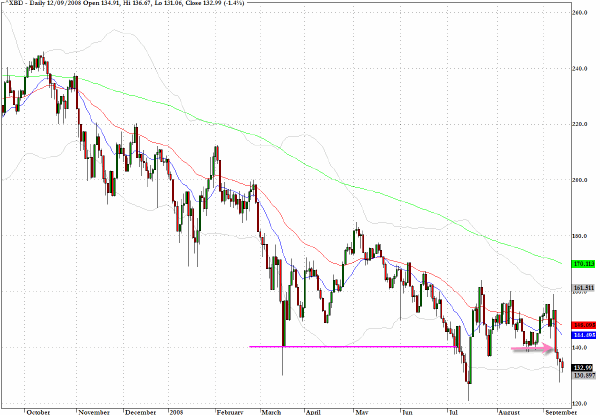
The Nikkei 225 and the Hang Seng are both closed for holidays this Monday morning after the momentous decisions that were made in New York on Sunday, September 14, but the European markets are approaching critical levels while this commentary is being written. Germany's DAX index is flirting with the 6000 level but still remains above it in late morning trading.
As discussed here last week a break below that level on high volume could take us down to the 5300 level.
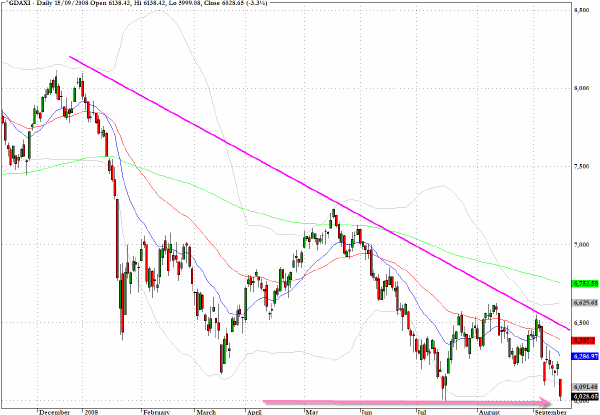
One well known commentator suggested that the fallout in the financials should not have a material impact on companies like Amgen and other techs.
We shall have to see whether the Nasdaq stocks (^IXIC) can help to alleviate some of the anxiety that overhangs the world of leveraged finance. The cynic might say that the problem with holding out hopes that companies like Amgen, Intel and Microsoft will provide some stability in a highly unstable environment is that they don't have the exciting price dynamics that hedge fund managers have come to enjoy with commodities, the financials and currencies.
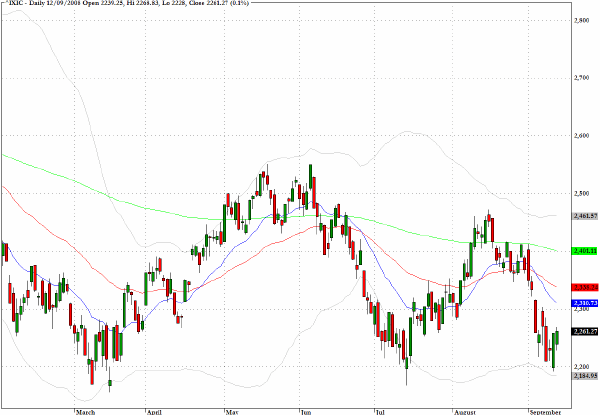
The chart for Goldman Sachs (GS) reflects the same issues that are evident on other charts discussed. One problem that I have with those calling for a capitulation moment is that the chart below shows that we already had one in March and now we have retreated to almost the same level as then.
So are we about to have a second capitulation moment? That's not how it is supposed to work, and to think that Goldman has been smart enough to sidestep the woes of structured financial instruments that have taken down three of its rivals seems suspect.
We may be closer to a bottom than analysts like Nouriel Roubini think but the unwinding of leverage and the fallout from the collapse of all of those dodgy derivatives still has some pain to inflict on Wall Street.
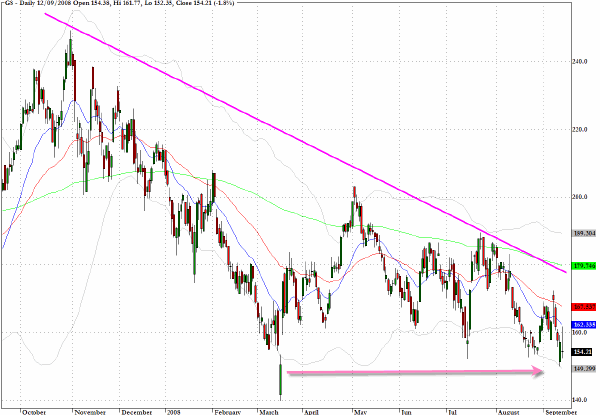
Just how all of this weekend's news will impact the dollar remains unclear. So far the evidence is not pointing to any real resurgence in the euro but one currency that does seem oversold and likely to bounce is the Australian dollar which could be headed back towards 86 cents in coming sesions. Longer term, this currency still looks to be headed towards lower levels against the US dollar.
The exchange traded fund FXA does provide easy access to this currency cross rate.
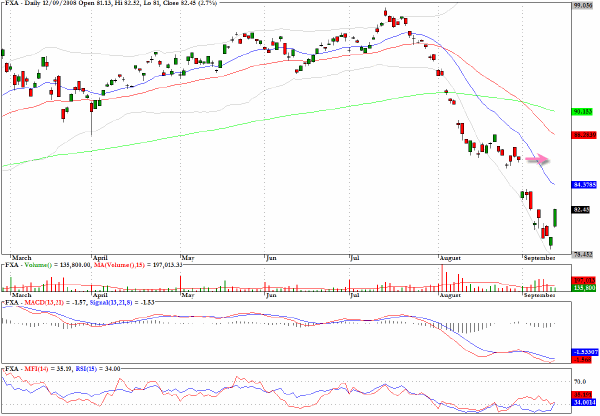
Clive Corcoran is the publisher of TradeWithForm.com, which provides daily analysis and commentary on the US stock market. He specializes in market neutral investing and and is currently working on a book about the benefits of trading with long/short strategies, which is scheduled for publication later this year.
Disclaimer
The purpose of this article is to offer you the chance to review the trading methodology, risk reduction strategies and portfolio construction techniques described at tradewithform.com. There is no guarantee that the trading strategies advocated will be profitable. Moreover, there is a risk that following these strategies will lead to loss of capital. Past results are no guarantee of future results. Trading stocks and CFD's can yield large rewards, but also has large potential risks. Trading with leverage can be especially risky. You should be fully aware of the risks of trading in the capital markets. You are strongly advised not to trade with capital.
|